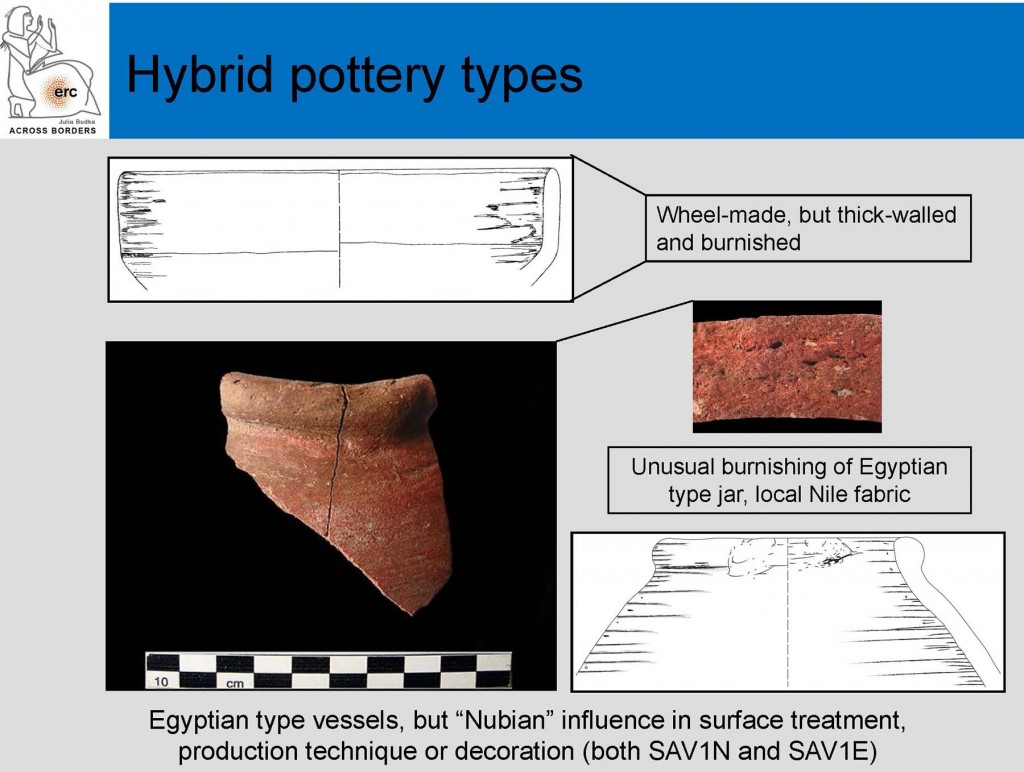An interesting phenomenon was addressed during several papers at the colloquium last week in London: The appearance of “hybrid” pottery types – locally produced vessels modelled on Egyptian types, but with a “Nubian” influence as far as the surface treatment, production technique or decoration is concerned. Well attested at Sai, Amara West and Sesebi, such types raise a number of questions. Egyptian style vessels made of local fabrics, shaped by hand or (clumsily) wheel-made with a Nubian surface treatment like ripple burnishing or incised decoration might be products of a temporary or local fashion. It remains to be investigated whether they also refer to the cultural identity of their users or whether they are the results of more complicated processes. All in all, hybrid pottery types from New Kingdom levels seem to attest a complex mixture of life styles in Upper Nubia.
At Sai, examples have been found both at SAV1 North and SAV1 East in 18th Dynasty levels, especially in contexts datable to the Thutmoside period.

